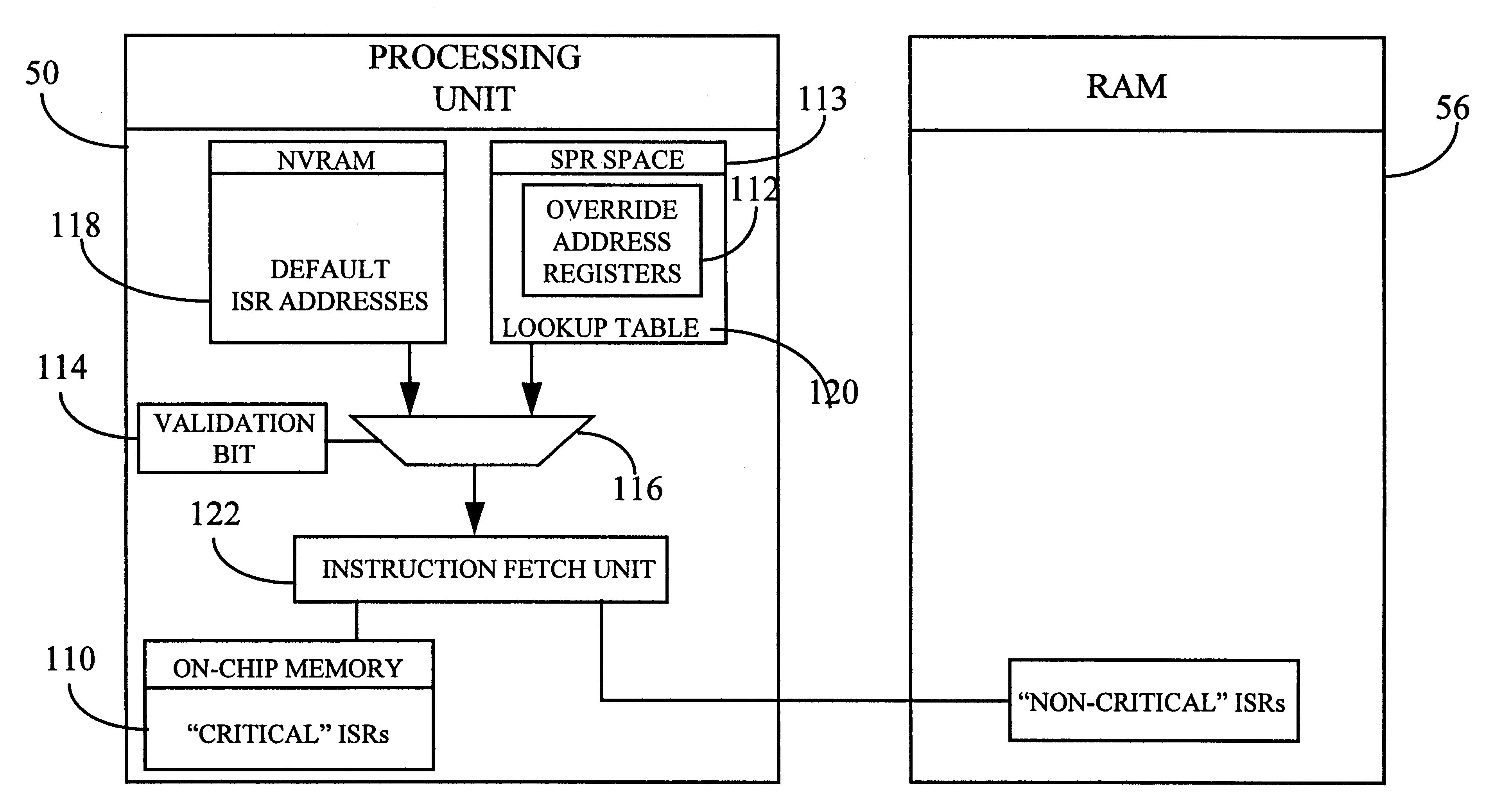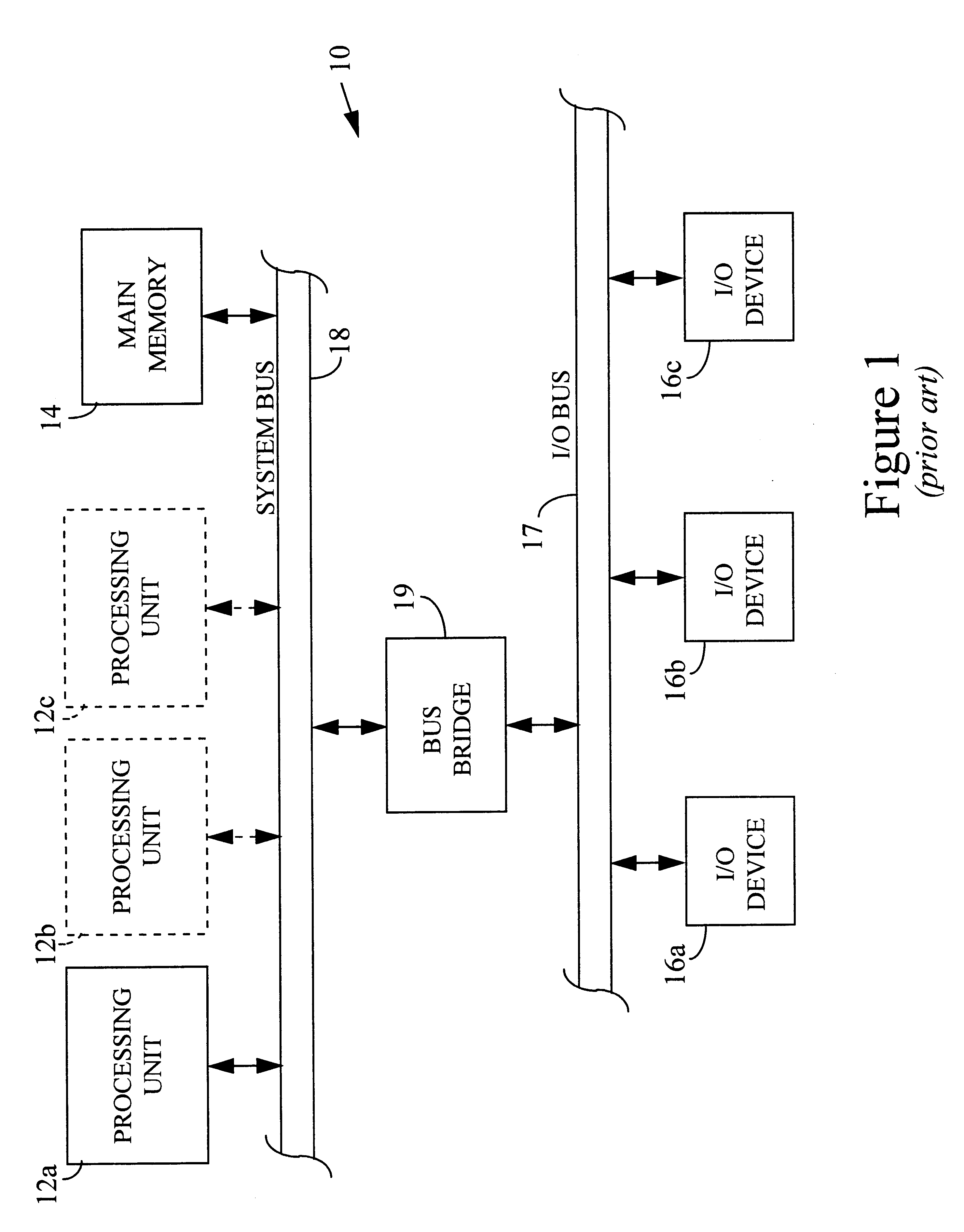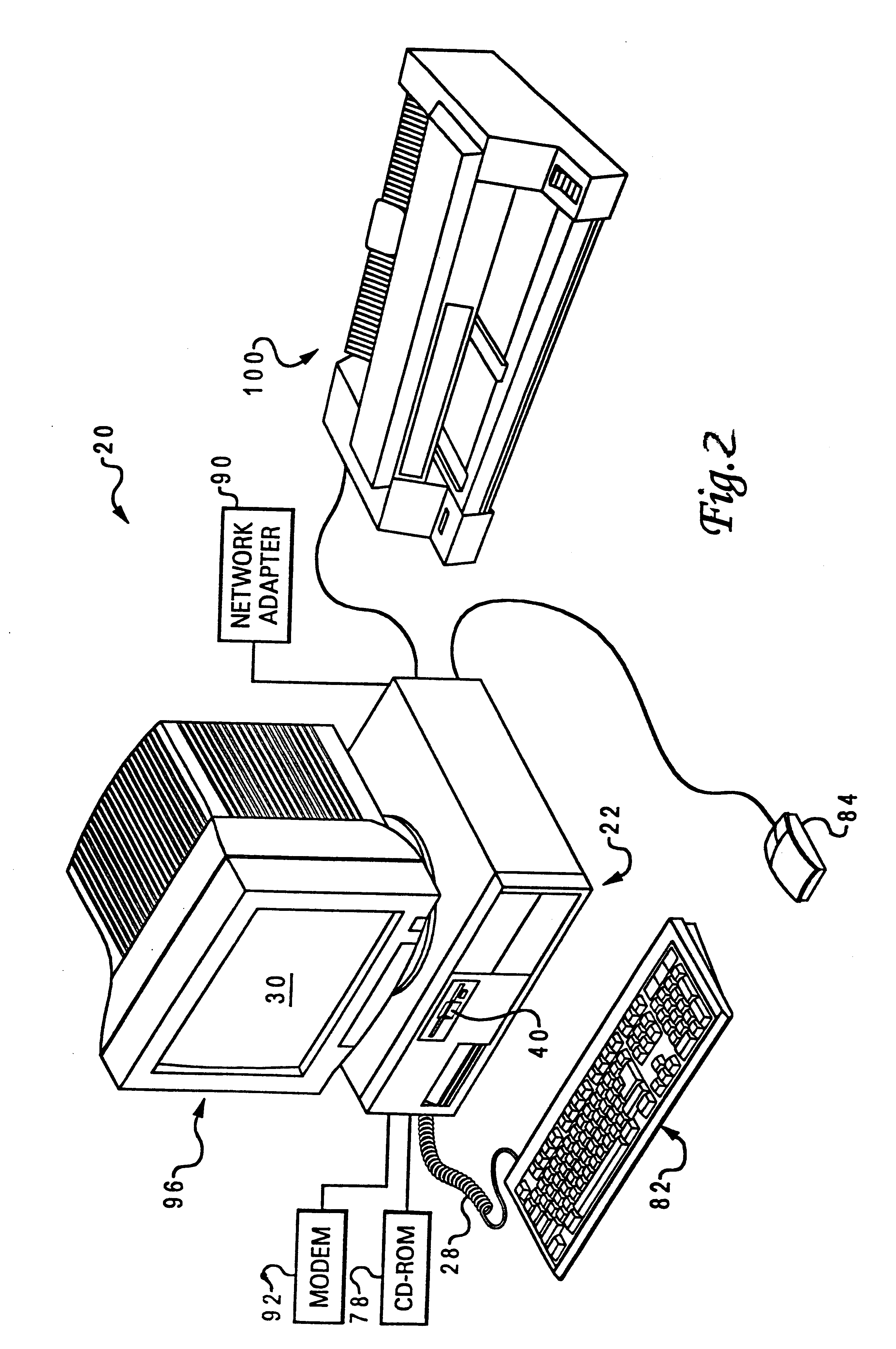Exceptions and interrupts with dynamic priority and vector routing
- Summary
- Abstract
- Description
- Claims
- Application Information
AI Technical Summary
Benefits of technology
Problems solved by technology
Method used
Image
Examples
Embodiment Construction
With reference to FIG. 2, a data processing system 20 is shown in which the present invention can be practiced. The data processing system 20 includes at least one processor 22, a keyboard 82, and a display 96. Keyboard 82 is coupled to processor 22 by a cable 28. Display 96 includes display screen 30, which may be implemented using a cathode ray tube (CRT), a liquid crystal display (LCD), an electrode luminescent panel or the like. The data processing system 20 also includes pointing device 84, which may be implemented using a track ball, a joy stick, touch sensitive tablet or screen, track path, or as illustrated a mouse. The pointing device 84 may be used to move a pointer or cursor on display screen 30. Processor 22 may also be coupled to one or more peripheral devices such a modem 92, CD-ROM 78, network adapter 90, and floppy disk drive 40, each of which may be internal or external to the enclosure or processor 22. An output device such as a printer 100 may also be coupled with...
PUM
 Login to View More
Login to View More Abstract
Description
Claims
Application Information
 Login to View More
Login to View More - R&D
- Intellectual Property
- Life Sciences
- Materials
- Tech Scout
- Unparalleled Data Quality
- Higher Quality Content
- 60% Fewer Hallucinations
Browse by: Latest US Patents, China's latest patents, Technical Efficacy Thesaurus, Application Domain, Technology Topic, Popular Technical Reports.
© 2025 PatSnap. All rights reserved.Legal|Privacy policy|Modern Slavery Act Transparency Statement|Sitemap|About US| Contact US: help@patsnap.com



